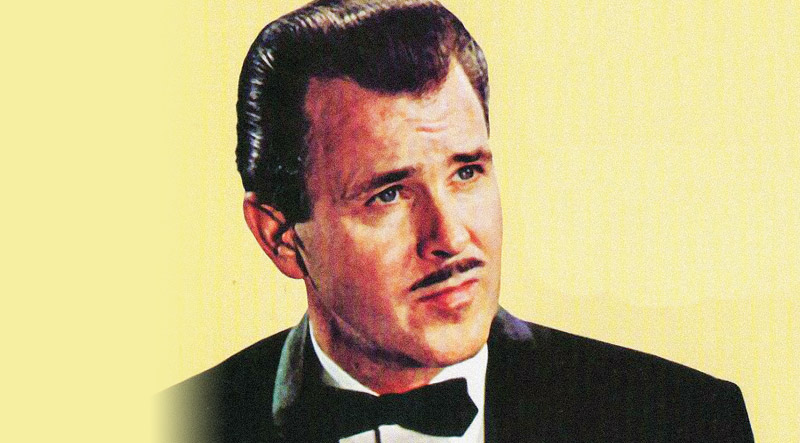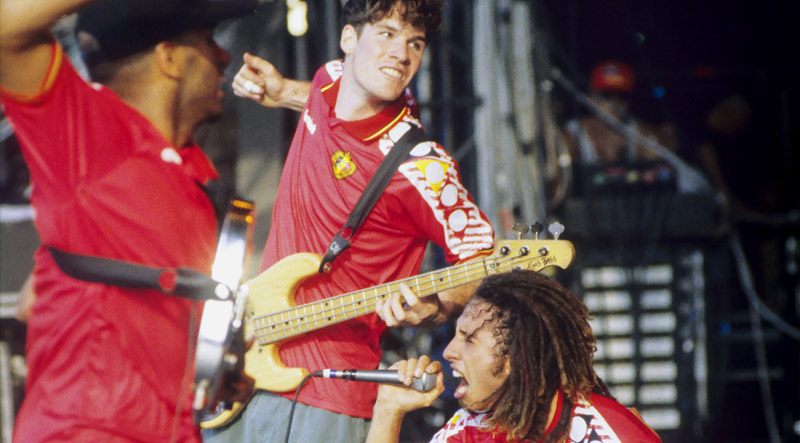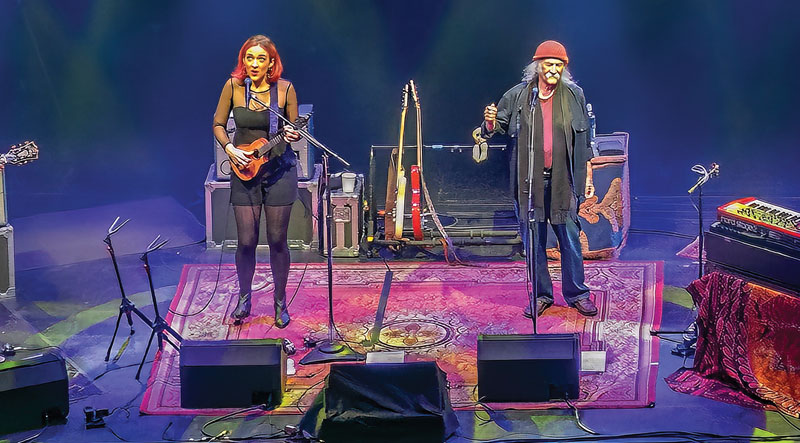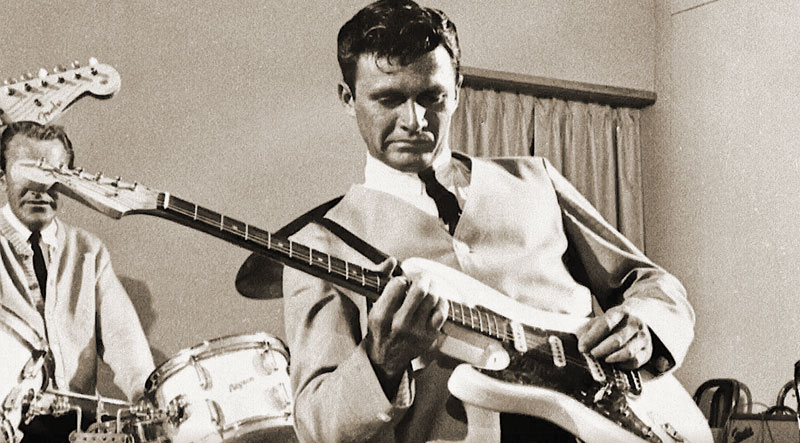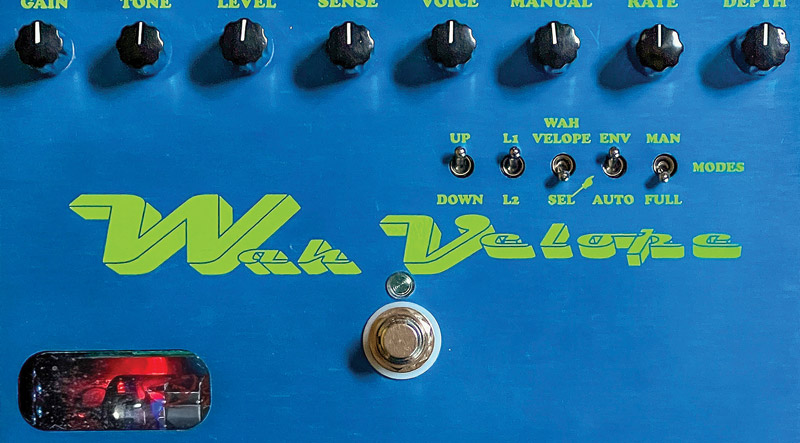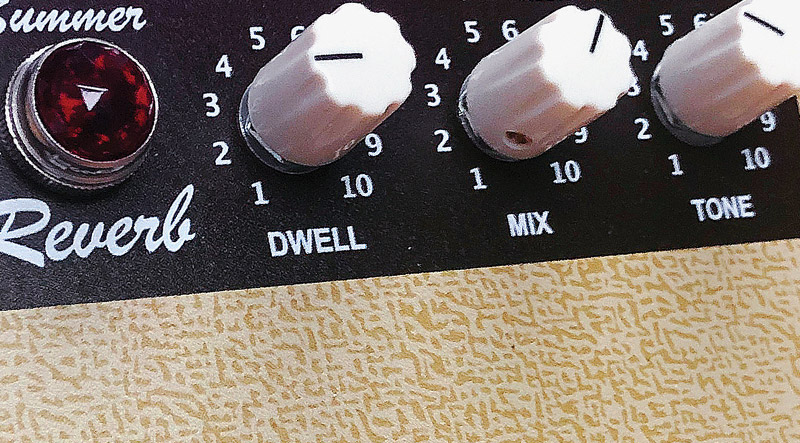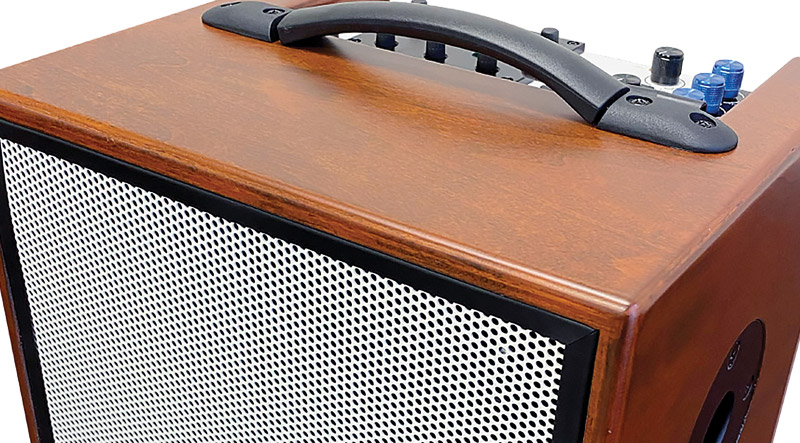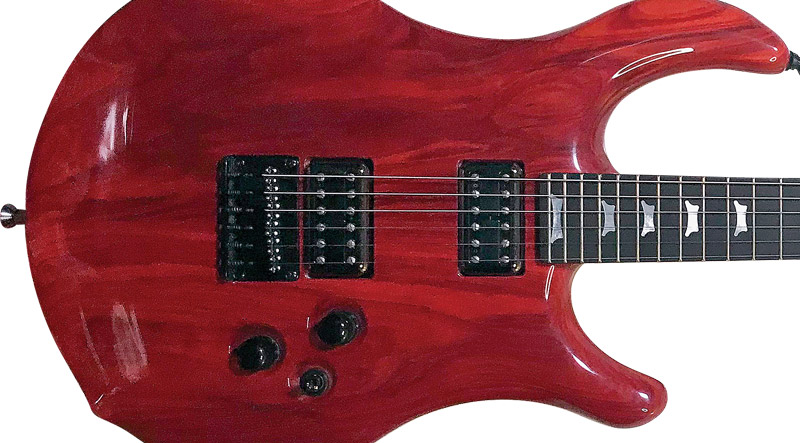Woefully under-recognized guitarist Roy Lanham was a favorite of leading country and jazz pickers and rock innovators; Merle Travis extolled his musicianship, and when Barney Kessel sought him out for coaching on country picking, Lanham exclaimed, “Take off your boots and hat, and you can be a great jazz player!”
Emerging when musical boundaries were flexible and undefined, Lanham embraced it all – country, jazz, pop, blues, Western swing, boogie-woogie, nascent rock and roll – even cocktail mood music, and concocted his own sonic stew.
Born in Corbin, Kentucky, on January 16, 1923, Lanham was drawn to music as a child through avid radio listening. Inspired by guitarist Harry C. Adams on WHAS in Louisiana playing jazz standards, Roy mastered the rudiments on his brother’s Stella before acquiring a Cromwell archtop when he was eight years old. He turned pro at 16, when Archie Campbell (later of “Hee Haw” fame) hired him to play with Grandpappy and His Gang for “Mid-Day Merry-G-Round” on WNOX in Knoxville. There he met the Stringdusters, featuring Homer Haynes and Jethro Burns, and began absorbing their gypsy-jazz influences. Combining the string-band traditions of country and swing-jazz of Django Reinhardt’s combos, Lanham formed his own groups with mandolinist Doug Dalton, rhythm guitarist Bynum Geouge, and bassist Red Wootten. They moved to Chattanooga, evolved into the Fidgety Four, were recruited by crooner Gene Austin as backup band in 1940, and became The Whippoorwills to coincide with a line from Austin’s hit, “My Blue Heaven.”
The quartet developed a distinctive four-part vocal harmony sound while Roy’s playing progressed through the influences of Charlie Christian and George Barnes, marking his early blend of country and jazz rendered on an amplified Gibson L-5. When The Whipps folded in ’41, he moved to Atlanta, joined Shades of Blue, befriended his idol George Barnes, and, inspired by Sheldon Bennett, began pursuing chord-melody playing.
Returning to Cincinnati in ’43, Lanham worked as WLW staff guitarist/bassist, accompanying Merle Travis, Joe Maphis, and Grandpa Jones, and was a coveted session player for King Records in ’44. He recorded with Hank Penny’s Plantation Boys and The Delmore Brothers. With the Delmores he was featured on “Freight Train Boogie” (duet with Jethro Burns), “Hillbilly Boogie” and “Steamboat Bill Boogie.” Several of these country boogies, graced with Roy’s boogie-woogie bass riffs and hot lead licks, foreshadowed rockabilly. He appeared on Chet Atkins’ ’45 Nashville debut, Chester Atkins and his All Star Hillbillies; “Guitar Blues” boasts Lanham’s chord-melody work and two choruses of soloing. After moving to Dayton in ’47, he acquired an Epiphone electric archtop and reconstituted The Whippoorwills with Dalton and a new lineup. Their unique ensemble sound of four-part instrumental and five-part vocals (with singer Juanita Vastine) was revolutionary, flaunting a live version of what Les Paul and Mary Ford achieved with studio wizardry and overdubs.
Despite all their brilliant innovation, they never resonated with pop audiences. In the late ’40s and early ’50s, they toured with Roy Rogers, held a residency at KWTO (Springfield, Missouri), and recorded in Los Angeles with Smiley Burnette. Concurrently, Lanham enlivened sessions for Johnny Horton, Jim Reeves, Johnny and Dorsey Burnette, Bonnie Guitar, The Browns, and others, and also recorded an instrumental single, “Klondike.” In this period, he began playing Fender electrics almost exclusively.
 “Lover Come Back To Me” exemplified Lanham’s chordal approach. A favorite standard in his repertoire, it illustrates his eclectic jazz-country tendencies and plucked fingerstyle technique. The C11 intro vamp receives an active syncopated treatment while the melody beginning in bar 3 is a straightforward interpretation of the verse theme. Note his combination of four-note chords, triads and single notes throughout as well as passing chords – Gm7 connecting F and Fmaj7 in 3 and C#m pushing into Dm in 7. The brisk block-chord passage in 11-12 is a trademark sound as is the country-rag turnaround in 15-16.
“Lover Come Back To Me” exemplified Lanham’s chordal approach. A favorite standard in his repertoire, it illustrates his eclectic jazz-country tendencies and plucked fingerstyle technique. The C11 intro vamp receives an active syncopated treatment while the melody beginning in bar 3 is a straightforward interpretation of the verse theme. Note his combination of four-note chords, triads and single notes throughout as well as passing chords – Gm7 connecting F and Fmaj7 in 3 and C#m pushing into Dm in 7. The brisk block-chord passage in 11-12 is a trademark sound as is the country-rag turnaround in 15-16.
In ’55, he replaced Jimmy Bryant on “Hometown Jamboree” and was featured weekly in spirited duets with Speedy West on TV – later captured on Guitar Spectacular – but his duties forced the Whipps to disband. His busy L.A. session schedule continued, distinguished by the Fleetwoods’ first #1 hits in ’59 (“Come Softly to Me” and “Mr. Blue”), Spade Cooley’s final album, Ned Miller’s hit “From a Jack to a Queen,” and Loretta Lynn’s debut, “Honky Tonk Girl.”
On the heels of his pop successes, Dolton Records asked Roy for a solo record, which started a run with The Most Exciting Guitar, an auspicious guitar/bass/drums trio set that mixed jazz, standards, country, and showcased his combined chord-melody and single-line techniques on “These Foolish Things” and “Old Joe Clark.” Sizzling Strings traded on the Whippoorwills’ name and offered jazz/pop renditions of swing classics by Benny Goodman, Glenn Miller, Stan Kenton, and Artie Shaw, as well as the distinctly Western “Kerry Dance,” a modernized fiddle tune. The all-instrumental ensemble sound of this Whippoorwill session replaced vocals with guitar/mandolin interplay woven into creative well-textured arrangements. “Lover” was a tour de force featuring meter, tempo, and feel changes and the virtuosity of Lanham and Dalton, which must’ve inspired the studio-crafted version by Les Paul and George Barnes a decade later on Les Paul Now!. The Fabulous Roy Lanham followed with a program of jazz and standards offset by mood pieces like “Sophisticated Swing,” “Holiday for Strings,” and a swinging chord-dominated bopper “Roy’s Blues.” The Spectacular Six-String of Roy Lanham, released later as a four-song EP, completed the series and, with the previous three, effectively placed his country/jazz style among early instrumental-rock records.
Roy joined the Sons of the Pioneers in ’61, after the death of guitarist Karl Farr. As session guitarist, he’d already played on several Sons’ albums (with Glen Campbell, Barney Kessel and Jimmy Wyble) and as a member served as comedian, featured soloist, and accompanist. Though his sideman role largely kept him in the background, in ’63 he made a memorable appearance in the movie 30 Minutes at Gunsight.
For the next three decades, Lanham worked steadily with the Sons, playing in the Missouri Ozarks every summer and Nevada nightclubs in the winter. In ’83, he traveled to Phoenix to perform in the All American Jam with Duane Eddy, Thumbs Carllile, Bud Isaacs, and other stars, then guested on Tex Williams’ last album in ’85.
He suffered health problems, and though he underwent open heart surgery and had bladder cancer, they didn’t sideline him until ’86, when a stroke forced his retirement. He succumbed to prostate cancer on February 14, 1992.
STYLE
Lanham pioneered an uncommon fusion of country, jazz, swing, and pop that reached an apex with his instrumental albums, peddled as “mood music” in the late ’50s and early ’60s. Howard Roberts and Speedy West enjoyed similar fates with their Capitol records. His crystalline “space age” Fender tone addressed the period’s instrumental-rock trappings and alerted anyone with ears they weren’t hearing Tal Farlow, Barney Kessel, or Joe Pass (though Pass used a Jazzmaster on his earliest records). However, his sophisticated solo lines in “Airmail Special” and ferocious bebop improvising in “Lost Weekend” sent mixed signals to the public and transcended the easy-listening cocktail-jazz marketing confines of the day, making it difficult to pigeonhole him. His technical proficiency and jazz conception, evident in “Can’t We Be Friends” and “These Foolish Things,” defied stereotyping while his melodic pop sense gave martini-sipping audiences the requisite fulfillment in “Eager Beaver.” Moreover, when it suited the music he seamlessly segued into country modes (“Wildwood Flower,” “Steel Guitar Rag”), Western swing (“Kerry Dance”), updated polkas (“Song of India”), bluesy pop (“Mellow Mood”) and occasionally flirted with Ventures-like rock sounds (“Lanham Boogie”). His diversity wasn’t limited to the ’50s; a decade earlier, he innovated within the Delmores hillbilly repertoire, injecting unprecedented electric-guitar riffs, chord punches, and blues-based single-note solos to create pre-rockabilly sounds that paved the way for Carl Perkins, Cliff Gallup, and Scotty Moore.
 Lanham recorded “Kerry Dance” several times in his career. This uptempo example from Most Exciting Guitar launched the solo (0:41) and epitomized his happy collision of country, blues, bop, and Western swing. He begins in a blues vein with bent double-stops and blues-scale riffs in bars 1-4. Note his use of the 9th tone D to broaden the C7 blues base in 4. His familiar country ascent rises to a blues lick in 5-6 and ends with bebop/blues idea in 7-8. What follows defies categorization and works atonal modernism into the proceedings. He applies a series of dissonant intervallic patterns to form angular arpeggios in 9-10. These same cells were used by Pat Martino and Randy Rhoads for a similarly startling effect. Roy melodically outlines a D7-G7-C chord progression in 12-13 and returns to a blues conception for his riff-based closing thoughts. Note the juggling of chromatic notes (F-F#-G) and rhythmic displacement in 14-16 that transform a typical blues-box lick into an ear-catching pedal-tone phrase.
Lanham recorded “Kerry Dance” several times in his career. This uptempo example from Most Exciting Guitar launched the solo (0:41) and epitomized his happy collision of country, blues, bop, and Western swing. He begins in a blues vein with bent double-stops and blues-scale riffs in bars 1-4. Note his use of the 9th tone D to broaden the C7 blues base in 4. His familiar country ascent rises to a blues lick in 5-6 and ends with bebop/blues idea in 7-8. What follows defies categorization and works atonal modernism into the proceedings. He applies a series of dissonant intervallic patterns to form angular arpeggios in 9-10. These same cells were used by Pat Martino and Randy Rhoads for a similarly startling effect. Roy melodically outlines a D7-G7-C chord progression in 12-13 and returns to a blues conception for his riff-based closing thoughts. Note the juggling of chromatic notes (F-F#-G) and rhythmic displacement in 14-16 that transform a typical blues-box lick into an ear-catching pedal-tone phrase.
A prominent aspect of Roy’s style was his alternation of single-note and chord textures. The former was exemplified by fast, fiddle-inspired country licks reminiscent of Western swing and electric bluegrass, swinging jazz, and blues phrases in the vein of Django, Christian, and Barnes, as well as the intricate ornamentation in “These Foolish Things.” The latter was heard in harmonically rich chord-melody pieces like “Tuxedo Junction,” “Roy’s Blues,” “As Time Goes By,” and his trademark rendition of “Lover Come Back to Me” as well as chord interludes and contrast phrases (juxtaposed with single-note lines) in his arrangements. Building on Bennett’s three-part chord style, he advanced the approach by adding a fourth voice to produce larger block chords. He tucked his flatpick between the index and middle fingers, and applied fingerpicking in plucking and arpeggiating full chords, partials, dyads, and triads for a pianistic sound presaging Joe Pass’ approach. He similarly channeled and repurposed Johnny Smith’s plectrum chord-melody style for the fingerpicked chording on “Where or When” and “Body and Soul,” evoked big-band horn-section impressions on “Sophisticated Swing,” and in “Wildwood Flower” applied a country-informed variant for a Merle Travis-approved polyphonic effect.
Roy was fond of expanding the guitar’s orchestral role. Consider the deliberate extensive palm muting in “Holiday for Strings,” harmonizations in “Tea for Two” and “Slipped Disc,” or the repurposing of standard guitar in the Fleetwoods’ “Come Softly To Me” and “Mr. Blue.” There, he tuned lower (sixth string to C) to create the bass line and combined it with other guitar parts (fills and rhythm chording) for an intriguing layered effect in the arrangements.
 Lanham’s opener on Most Exciting Guitar was Woody Herman’s “Lost Weekend,” a perfect vehicle for his virtuosity and blend of swing, bop and country tangents. This excerpt (0:56-1:07) begins with a groove riff made of repeated arpeggio patterns that alternate high notes F, F# and G in measures 1-4 resulting in different tonal implications. Blues dissonance is conveyed with F while F# and G, diatonic to D, are sweeter. He applies a characteristic slow string bend in 5 and adds the ninth to his blues line (a signature sound) in 7-8. The stepwise ascent in 9-10 has country fiddle-tune connotations but gives way to a bebop/blues mixture in 10-12.
Lanham’s opener on Most Exciting Guitar was Woody Herman’s “Lost Weekend,” a perfect vehicle for his virtuosity and blend of swing, bop and country tangents. This excerpt (0:56-1:07) begins with a groove riff made of repeated arpeggio patterns that alternate high notes F, F# and G in measures 1-4 resulting in different tonal implications. Blues dissonance is conveyed with F while F# and G, diatonic to D, are sweeter. He applies a characteristic slow string bend in 5 and adds the ninth to his blues line (a signature sound) in 7-8. The stepwise ascent in 9-10 has country fiddle-tune connotations but gives way to a bebop/blues mixture in 10-12.
ESSENTIAL LISTENING
The Most Exciting Guitar, Sizzling Strings, The Fabulous Roy Lanham, and The Spectacular Six-String of Roy Lanham are required listening. Also worthy are the Whippoorwills’ Hard Life Blues, Speedy West’s Guitar Spectacular, and his work with the Delmore Brothers.
ESSENTIAL VIEWING
Roy’s “Lover Come Back to Me” and “Kerry Dance,” Whippoorwills’ “Hard Life Blues,” “Arkansas Traveler” and “Walking With You,” and a 1986 interview with Deke Dickerson provide enlightening glimpses online.
SOUND
Roy began his career on hollowbody archtops – first a Cromwell, then a blond Gibson L-5 purchased around 1940 for $324, retrofitted with a DeArmond pickup. With the Whipps, he played an early (circa ’49-50) Epiphone Zephyr De Luxe Regent with two large built-in pickups, blade selector switch, and master Tone and Volume circuit. Leo Fender gave him a Stratocaster in ’54, starting him on Fender solidbodies; in ’58, he was an early endorser of the Jazzmaster, using a sunburst/anodized-pickguard model at NAMM demos with Speedy West. Roy’s mainstay was red with tortoiseshell pickguard, seen on TV and several album covers. In the ‘60s, he also played a Jaguar and Bass VI.
The common denominator among these disparate instruments was the single-coil pickup. Loyal to Leo, in the ’70s he favored Music Man Stingray guitars (one with a Jaguar neck), then played G&L guitars in the ’80s, with Fender light strings (unwound G after the ’60s). He used heavy Fender flatpicks and switched to a thin pick in the ’80s. Roy also owned a Fender-style electric with a figured-maple made by Roberto-Venn Luthiery and played a Fender Kingman acoustic with medium strings. His effects were spare – spring reverb, studio echo (Joe Maphis’ Ray Butts EchoSonic amp produced the slap-back effect on “These Foolish Things”) and fleeting use of chorus in the ’70s.
Roy plugged into Kalamazoo amps in the ’40s with the Delmores and Whipps, and used Fender tweed and blackface amps in ’50s and ’60s. By the ’80s, he preferred a Randall 2000 amp.
Wolf Marshall is the founder and original editor-in-chief of GuitarOne magazine. A respected author and columnist, he has been influential in contemporary music education since the early 1980s. His books include 101 Must-Know Rock Licks, B.B. King: the Definitive Collection, and Best of Jazz Guitar, and a list credits can be found at wolfmarshall.com.
This article originally appeared in VG’s January 2023 issue. All copyrights are by the author and Vintage Guitar magazine. Unauthorized replication or use is strictly prohibited.

